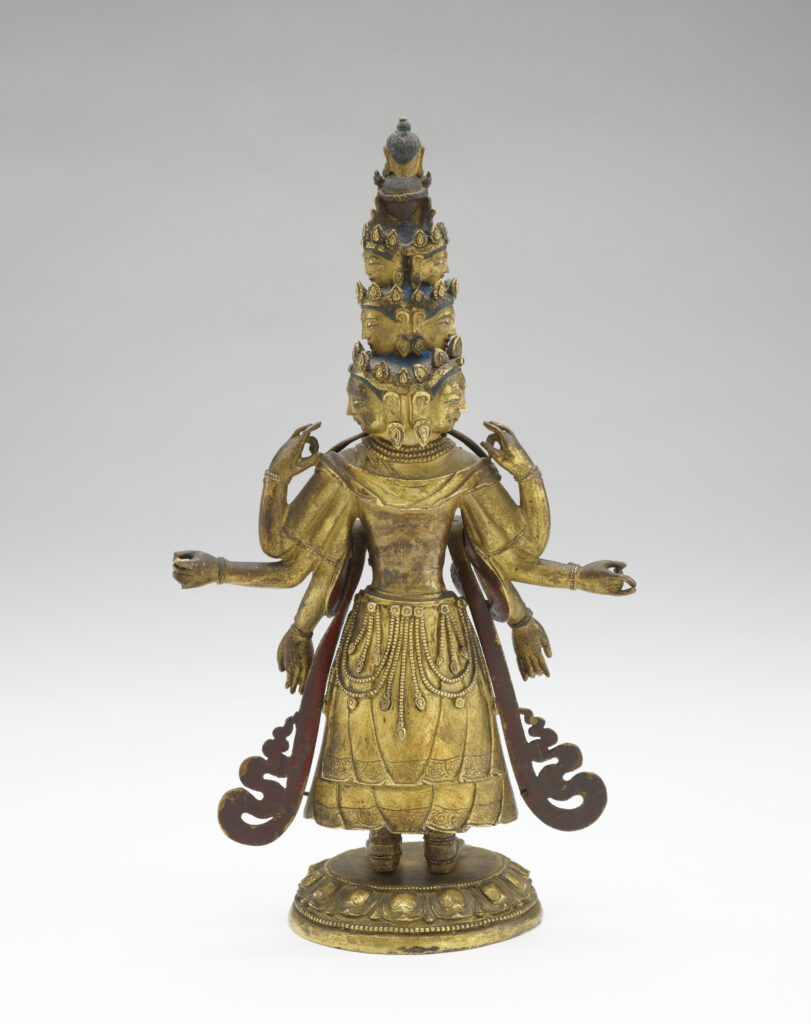

Title: Eleven Headed Avalokiteshvara
Material/medium: Gilt copper; pigments; base plate loose; engraved with double vajra; contents inside
Date: Qing dynasty, mid 18th century
Culture: China
Dimension: H x W: 25.4 x 12.7 cm (10 x 5 in)
Repository: Sackler Gallery 22: Encountering the Buddha
Description: The standing figure here depicts the Avalokiteshvara, the Buddha of compassion. Standing on top of a circular mound, that could represent a lotus flower. The figure has eight arms, all making different hand gestures. The figure also has eleven heads stacked on top of each other and each side, including the back. Avalokiteshvara is well dressed, wearing a dress with pieces of cloth draped over the shoulders and hanging down the sides. The figure has many pieces of jewelry, including necklaces, bracelets, and earrings. Each head has an urna in the middle of the forehead, and all the heads, not including the top head, have lotus crowns. The top head and the smallest head do not have a crown but a top knot of hair.
Analysis: The Avalokiteshvara is depicted with multiple heads to highlight the journey of enlightenment. The first head has a serene facial expression like they are caught in the act of meditation. The top head also has a peaceful facial expression and depicts the enlightened Buddha. This can be identified as the enlightened Buddha by the top knot of hair and long earlobes. The head directly below the enlightened Buddha has an angry facial expression that could represent suffering. This angry facial expression highlights how suffering is an integral part of enlightenment and how the Buddha had to suffer to be enlightened. The heads also represent how the Avalokiteshvara has eyes on all the people, emphasizing their ability to help everyone. This idea is also expressed in the arms of the figure. Since the Avalokiteshvara is the Buddha of compassion, it needs multiple arms to help the Buddhist people become enlightened. The jewelry and crowns make the Avalokiteshvara look royal and emphasize wealth and fortune. The duality of this figure is prevalent. Wealth and religious symbols work in harmony to depict Avalokiteshvara as a religious but also royal figure.
Each head represents an aspect of the compassionate deity, even the wrathful forms, which reflect. A work made of bronze with gold, pigments, and semiprecious stones.